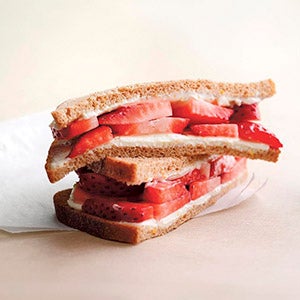Food safety for back to school meals
Published 7:47 am Sunday, August 21, 2016
Brown bag lunches, leftover pizza boxes and raw hamburger left sitting on the counter are big no-no’s when it comes to food safety.
New school schedules may make it difficult to plan meals, but make sure you follow these food safety tips when packing lunches and thawing meats for meals.
The FDA describes the “Danger Zone” for foods to be between 40 and 140 degrees. Harmful bacteria multiplies rapidly when food is kept at this temperature. As a rule of thumb, cold foods should stay below 40 degrees and hot foods should stay above 140 degrees. Perishable lunch foods are safe for two hours, unless the temperature is over 90 degrees, without a cold source, but using an insulated lunch box with at least two ice packs is the best way to keep your food safe.
Examples of foods to keep safe are meats, soft cheeses, yogurt, cut fruits and vegetables and leftovers. If you are lacking space in your lunch box, try freezing your juice boxes or water bottles to use as a cold source. So, ditch the potato salad that was left on the counter after a potluck, the pizza box that was sitting overnight and the brown paper lunch sacks, and invest in an insulated lunch box with freezer packs.
There are many foods that do not require cold or hot sources for lunches such as whole fruits and vegetables, hard cheese, crackers, chips and pretzels, peanut butter and jelly sandwiches and pickles.
Sometimes leftovers taste even better the second time around, but they can be a trap for harmful bacteria. Try to avoid keeping restaurant leftovers in the containers you came home with; instead, wrap or pack them in an air-tight container.
Remember to always heat leftovers to at least 165 degrees. Sauces, soups and gravies should be brought to a rolling boil. By covering your leftovers you trap moisture needed to heat the food all the way through, and keep your microwave clean. Leftovers should only be kept for three to four days in the refrigerator or three to four months in the freezer.
Thousands of people get sick each year from wrongly thawed foods. Setting hamburger on the counter all day or out in the sun or even in the dishwasher are just few of the many wrong ways to thaw food. Foods, especially meats, should be thawed in the refrigerator, cold water or by using the microwave. If using the refrigerator, make sure you plan ahead.
For every five pounds of food you plan to thaw, you should plan on keeping it in the fridge for 24 hours. After using this method, foods can be kept safely in the fridge for three to five days. If you choose the cold water method, make sure your food is in a leak-proof package. The food should be under cold water, changing the water every 30 minutes.
Food thawed this way must be cooked immediately. Microwave thawing can be dangerous because food can start to cook, bringing the food into the “Danger Zone.” Make sure you are cooking this food immediately after thawing.
Keep your family safe in the lunch room and in the kitchen by following food safety best practices. Sliced strawberries and reduced-fat cream cheese come together in a sandwich for this quick and healthy lunch box treat.

Strawberry and Cream Cheese Sandwich
Strawberry and Cream Cheese Sandwich
Serves 1
All you need
•1 tbsp Hy-Vee 1/3 less fat cream cheese
•1/4 tsp Hy-Vee honey
•1/8 tsp freshly grated orange zest
•2 slices very thin whole-wheat sandwich bread
•2 medium strawberries, sliced
All you do
1. Combine cream cheese, honey and orange zest in a bowl.
2. Spread bread with the cheese mixture. Place sliced strawberries on 1 piece of bread, top with the other.
Source: adapted from EatingWell Inc.
The information is not intended as medical advice. Please consult a medical professional for individual advice.

